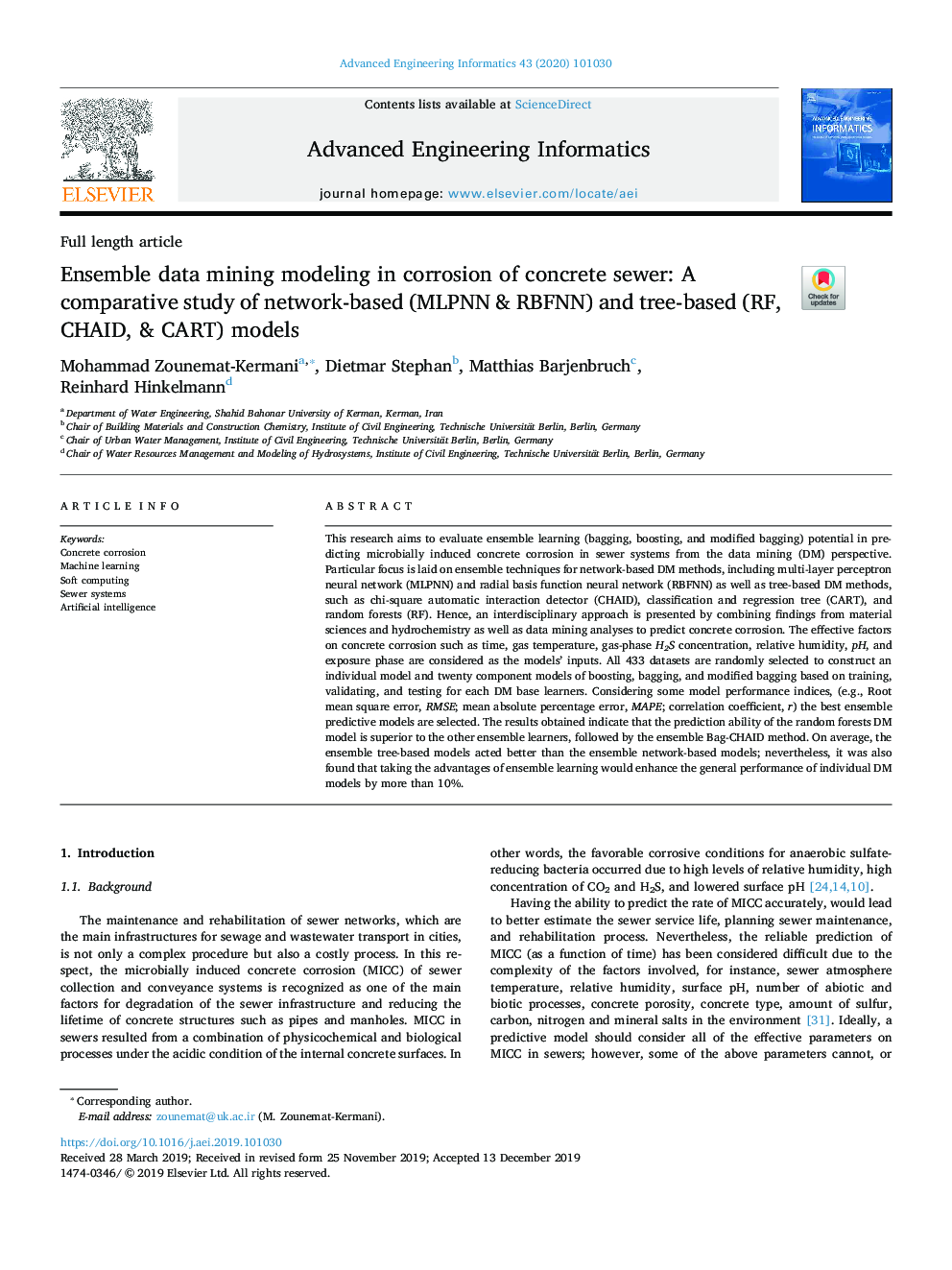| کد مقاله | کد نشریه | سال انتشار | مقاله انگلیسی | نسخه تمام متن |
|---|---|---|---|---|
| 13418716 | 1841447 | 2020 | 12 صفحه PDF | دانلود رایگان |
عنوان انگلیسی مقاله ISI
Ensemble data mining modeling in corrosion of concrete sewer: A comparative study of network-based (MLPNN & RBFNN) and tree-based (RF, CHAID, & CART) models
دانلود مقاله + سفارش ترجمه
دانلود مقاله ISI انگلیسی
رایگان برای ایرانیان
کلمات کلیدی
موضوعات مرتبط
مهندسی و علوم پایه
مهندسی کامپیوتر
هوش مصنوعی
پیش نمایش صفحه اول مقاله

چکیده انگلیسی
This research aims to evaluate ensemble learning (bagging, boosting, and modified bagging) potential in predicting microbially induced concrete corrosion in sewer systems from the data mining (DM) perspective. Particular focus is laid on ensemble techniques for network-based DM methods, including multi-layer perceptron neural network (MLPNN) and radial basis function neural network (RBFNN) as well as tree-based DM methods, such as chi-square automatic interaction detector (CHAID), classification and regression tree (CART), and random forests (RF). Hence, an interdisciplinary approach is presented by combining findings from material sciences and hydrochemistry as well as data mining analyses to predict concrete corrosion. The effective factors on concrete corrosion such as time, gas temperature, gas-phase H2S concentration, relative humidity, pH, and exposure phase are considered as the models' inputs. All 433 datasets are randomly selected to construct an individual model and twenty component models of boosting, bagging, and modified bagging based on training, validating, and testing for each DM base learners. Considering some model performance indices, (e.g., Root mean square error, RMSE; mean absolute percentage error, MAPE; correlation coefficient, r) the best ensemble predictive models are selected. The results obtained indicate that the prediction ability of the random forests DM model is superior to the other ensemble learners, followed by the ensemble Bag-CHAID method. On average, the ensemble tree-based models acted better than the ensemble network-based models; nevertheless, it was also found that taking the advantages of ensemble learning would enhance the general performance of individual DM models by more than 10%.
ناشر
Database: Elsevier - ScienceDirect (ساینس دایرکت)
Journal: Advanced Engineering Informatics - Volume 43, January 2020, 101030
Journal: Advanced Engineering Informatics - Volume 43, January 2020, 101030
نویسندگان
Mohammad Zounemat-Kermani, Dietmar Stephan, Matthias Barjenbruch, Reinhard Hinkelmann,